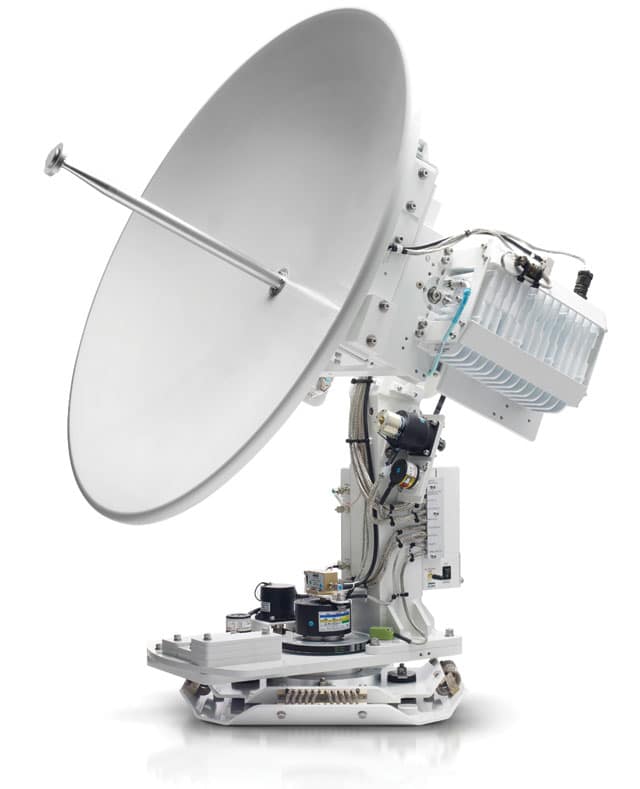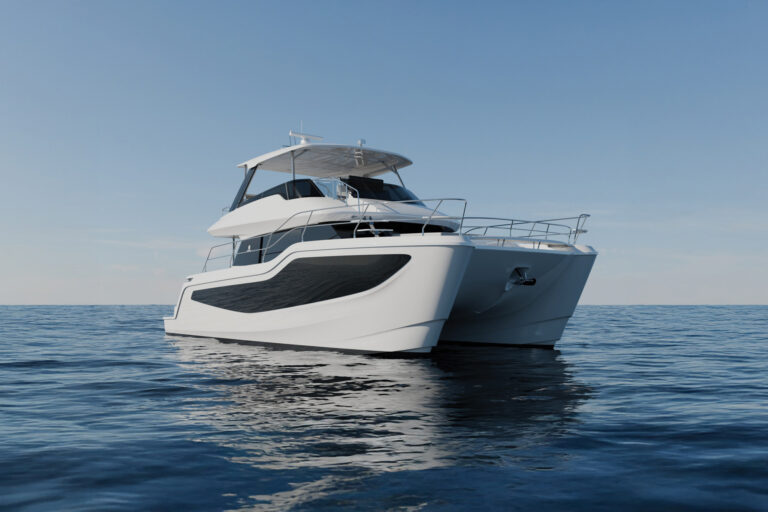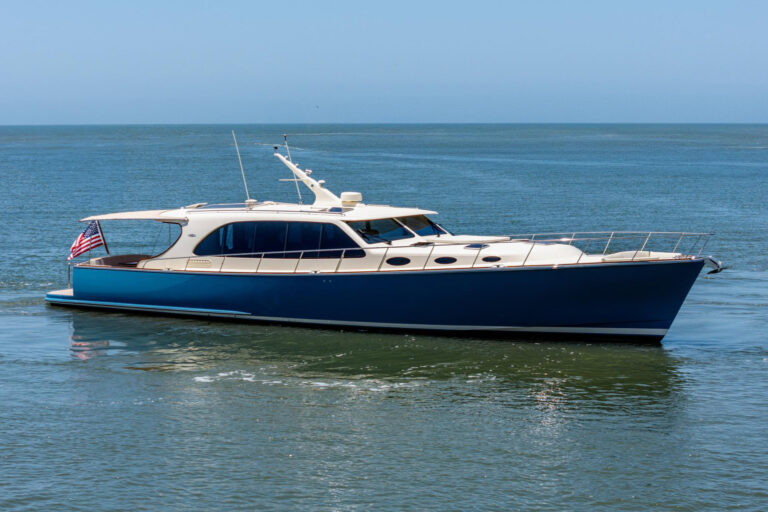
Intellian Dynamic Beam Tilting
I knew that I was in for an eye-opening experience when I swiped my iPhone from “Airplane” to “Wi-Fi Only” mode upon arriving at South Korea’s Incheon International Airport. The phone immediately joined a free, ultrafast hot spot that allowed me to make crystal-clear Skype voice calls and surf the Web at a blinding pace. This country’s national obsession with cutting-edge technology was made even more evident when I visited Intellian’s Innovation Center. Eric Sung, Intellian’s president and CEO, and a handful of other visionary radio-frequency experts founded Intellian in 2004 with the goals of leveraging top-notch technologies and creating new solutions for longstanding sat-com problems. For the first four years, Intellian quietly served as the original equipment manufacturer for Raymarine (a partnership that remains strong today) before starting to sell antennas with its own logo in 2007. These days, the company caters to diverse sat-com markets, from leisure marine (small sailboats to superyachts) to large ships, the military (a growing segment of its business) and the oil and gas industries. During my visit, I took an interest in five key technologies that have helped propel Intellian to the top of the global sat-com market while improving offshore communications for boaters.
Dynamic Beam Tilting
Traditional television receive-only (TVRO) antennas use motors and a gyroscope to constantly move the unit’s main reflector dish along its cross-level plane in order to track the geosynchronous satellite that’s providing its signal. While this method is effective, it’s power hungry and noisy and delivers comparatively slow signal-response times. Motor noise and power draw are irrelevant under power, but volume and vibration can be bothersome during otherwise-quiet nights. Intellian’s patented Dynamic Beam Tilting technology, which put the company on the chart in 2004-05, tracks the satellite along all three planes with a small subreflector that spins at extremely fast speeds. Dynamic Beam Tilting (employed on all Intellian/Raymarine TVRO antennas except the s80HD, which instead uses a three-axis stabilization system) delivers high-accuracy tracking and constant signal lock without motor noise, vibration, a big energy draw or a gyroscope. Moreover, Intellian’s patented Wide Range Search algorithm allows these units to constantly measure the satellite’s position in order to maintain the strongest possible signal, and enables quick location of the signal. For end users, this technology helps to eliminate the small “dark” periods that can occur while the antenna locates satellite signals.
WorldView LNB
Intellian released its WorldView low noise block (LNB) technology for the TVRO market in 2010, and the technology struck a chord with boaters who regularly cruise among different countries (Florida and the various Caribbean islands, for example) and who want TV service, irrespective of the latest stamp on their passport and without requiring a tool kit. This technology, which is available on the s80HD, the World- and t-series, and the i6W, lets boaters cruise between satellite-service regions without having to physically change out any hardware inside their unit’s dome. Intellian’s WorldView LNB technology electronically selects the best television-service provider and automatically switches the antenna’s local frequency and polarization based on the satellite that it’s tracking (switching between high or low band, circular or linear polarization) to ensure seamless service. Intellian’s antenna control unit (ACU) contains all of the switching information, as well as a built-in module for Ku-band HD reception, simplifying the user experience. Most important, WorldView LNB frees users from stockpiling multiple LNB units and from having to physically swap out these delicate parts each time the vessel crosses into a different satellite-service region.

Ku and Ka Trio LNB
While regular television service is OK, it’s easy to miss the razor-sharp resolution of high-definition TV service, especially if your vessel is kitted out with big HD screens. Different service providers broadcast high-definition TV signals on different frequency bands (e.g., Ku or Ka bands) and from different satellites, which is challenging for cruising yachts that travel internationally and demand HD service. In the United States, for example, DirecTV transmits its HD TV signals on the Ka band while it broadcasts its standard-definition signals on the Ku band, causing complications for users who want to be able to simultaneously watch both HD and SD programming in different staterooms. To address this concern, Intellian developed its Ku and Ka Trio LNB in 2011. These antennas feature triple-feed horns, allowing for simultaneous reception of three different satellites (one Ka-band satellite at 99 degrees of elevation, a Ku-band satellite at 101 degrees and a second Ka-band satellite at 103 degrees), giving owners and guests plenty of viewing options without having to change out any hardware or lower their entertainment expectations.
Global PLL LNB
Very small aperture terminal (VSAT) antennas allow mariners to communicate via voice and Internet service, provided that the antenna can lock onto a nearby satellite. Much like TVRO satellite-service regions, different VSAT service providers broadcast their signals on different frequencies in different regions of the globe, typically requiring users to change out their LNB module as they cruise between coverage zones. To avoid this complication, Intellian introduced the Global PLL LNB in late 2011. This tidy unit can receive globally the full range of operating frequencies that are broadcast from VSAT satellites. “The unit automatically changes frequencies based on the yacht’s location,” said Paul Comyns, Intellian’s vice president of global marketing. “The owner doesn’t have to change anything — it will work in regions around the world, providing stable satellite communications.” Intellian’s antenna control unit comes pre-populated with a menu of local-oscillator frequencies, which are required for the antenna to work properly, or a user can specify a particular frequency; the unit will work with an unlimited number of user-determined local-oscillator frequencies, thus helping to deliver seamless service and future-proof operations.
Global Xpress
In late 2011, Inmarsat — the leading global sat-com-services provider — selected Intellian as a manufacturer of marine-stabilized antennas for Inmarsat’s new Global Xpress (GX) service, which will start in 2014. This service provides global Ka-band coverage (with data-transfer rates of up to 50 Mbps), providing boaters with fast, cost-effective service. Intellian’s v100GX, which was released in March 2012, is shipped with a standard Ku-band radio-frequency module and a Ku-band signal-feed horn. Also available is an optional GX conversion kit featuring a GX radio-frequency assembly, a GX feed and a GX ACU. “A user can install a v100GX today and be safe that in a few years he can upgrade to the GX conversion kit,” said Comyns, who advised that Intellian has been providing dishes of this size to yachts starting at 100 feet in length. Also, Intellian is in the process of designing two additional GX antennas that will be shipped from its factory with Ka-band GX internals and will likely be a great match for smaller yachts.
While my jet-lagged brain was happy to return to Seattle’s familiar sunrise/sunset patterns, I’ve sorely missed South Korea’s high-speed public Wi-Fi access, especially considering that most U.S.-based hot spots are locked or offer snaillike speeds. Still, my South Korea experience demonstrated the kind of gains that a country can make when its efforts are united for common goals, such as connectivity. Intellian certainly understands this lesson, given the sweeping innovations that it has unveiled in less than a decade. But more important, Intellian customers are enjoying these innovations in far-flung locations, without sacrificing Internet access or risking missing the big game.









